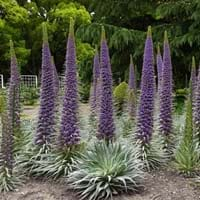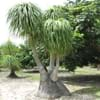Life Span
Biennial
Perennial
Type
Tree
Flowering Plants
Origin
Canary Islands
Mediterranean, North Africa, Northern America
Types
Not Available
Anthony Peak Lupine, Silver Bush, Garden Lupine, Spider Lupine, Adonis Lupine
Number of Varieties
Not Available
Habitat
tropical environments
Pine barrens, Sandy areas
USDA Hardiness Zone
8-10
3-7
Sunset Zone
21,22
1a, 1b, 2a, 2b, 3a, 3b, 4, 5, 6, 7, 14, 15, 16, 17
Habit
Upright/Erect
Upright/Erect
Flower Color
Light Blue, Blue Violet
Blue, Pink, White
Flower Color Modifier
Bicolor
Not Available
Fruit Color
Non Fruiting Plant
Not Available
Leaf Color in Spring
Green, Gray Green
Light Green
Leaf Color in Summer
Green, Gray Green
Green
Leaf Color in Fall
Green, Gray Green
Green
Leaf Color in Winter
Light Green
Not Available
Leaf Shape
Lobed
Oblovate
Plant Season
Not Available
Summer
Sunlight
Full Sun
Full Sun, Part sun
Type of Soil
Loam, Sand
Loose, Moist
The pH of Soil
Neutral, Alkaline
Slightly Acidic
Soil Drainage
Well drained
Well drained
Bloom Time
Early Summer, Summer
Late Spring, Summer
Tolerances
Not Available
Not Available
Where to Plant?
Ground
Ground
How to Plant?
Seedlings, Stem Cutting
Seedlings
Plant Maintenance
Medium
Medium
Watering Requirements
Medium
Form a Soil ring to water efficiently, Keep the ground moist but not water-logged, Requires a lot of watering, Water in morning to avoid prompting diseases
In Summer
Lots of watering
Lots of watering
In Spring
Moderate
Moderate
In Winter
Average Water
Average Water
Soil pH
Neutral, Alkaline
Slightly Acidic
Soil Type
Loam, Sand
Loose, Moist
Soil Drainage Capacity
Well drained
Well drained
Sun Exposure
Full Sun
Full Sun, Part sun
Pruning
Remove damaged leaves, Remove dead branches, Remove dead leaves
Prune ocassionally
Fertilizers
All-Purpose Liquid Fertilizer
All-Purpose Liquid Fertilizer
Pests and Diseases
Red blotch
Aphids, Fusarium wilt, Root rot, Thripes
Plant Tolerance
Drought
Drought
Flower Petal Number
Single
Single
Showy Fruit
Not Available
No
Foliage Texture
Fine
Medium
Foliage Sheen
Matte
Matte
Attracts
Not Available
Bees
Allergy
Not Available
Abdominal pain, Asthma, Nausea, Swelling in the face, Vomiting
Aesthetic Uses
Showy Purposes
Showy Purposes
Beauty Benefits
Not Available
Not Available
Environmental Uses
Air purification
Air purification
Medicinal Uses
Not Available
Anthelmintic, Diuretic, Treatment of ulcers
Part of Plant Used
Flowers, Leaves
Flowers, Seeds
Other Uses
Showy Purposes
Showy Purposes, Used as Ornamental plant, Used for fragrance
Used As Indoor Plant
Sometimes
No
Used As Outdoor Plant
Yes
Yes
Garden Design
Container, Feature Plant, Mixed Border, Wildflower
Bedding Plant, Container, Feature Plant, Foundation, Rock Garden
Botanical Name
ECHIUM pininana
Lupinus
Common Name
Giant Viper's Bugloss, Pine Echium, Tree Echium
Hybrid Lupine
In Hindi
Tree Echium
वृक संयंत्र
In German
Baum Aciam
lupine
In French
Arbre ACIAM
usine de lupin
In Spanish
árbol Aciam
planta de lupino
In Greek
δέντρο Aciam
φυτό λούπινο
In Portuguese
árvore Aciam
tremoço planta
In Polish
drzewo Aciam
łubin roślin
In Latin
lignum Aciam
Plinio herba
Phylum
Magnoliophyta
Magnoliophyta
Class
Magnoliopsida
Magnoliopsida
Family
Boraginaceae
Fabaceae
Clade
Angiosperms, Asterids, Eudicots
Not Available
Tribe
Not Available
Not Available
Subfamily
Not Available
Faboideae
Number of Species
Not Available
Difference Between Tree Echium and Lupine
If you are confused whether Tree Echium or Lupine are same, here are some features about those plants to help you choose better. Many people think that these two plants have the same characteristics, but one can see Tree Echium and Lupine Information and learn more about it. Fertilizers required for proper growth of Tree Echium are All-Purpose Liquid Fertilizer, whereas for Lupine fertilizers required are All-Purpose Liquid Fertilizer. Hence, one should know the basic difference between Tree Echium and Lupine if you are planning to have them in your garden to enhance its beauty.
<
Flowering PlantsImportance of Tree Echium and Lupine
Want to have the most appropriate plant for your garden? You might want to know the importance of Tree Echium and Lupine. Basically, these two plants vary in many aspects. Compare Tree Echium and Lupine as they differ in many characteristics such as their life, care, benefits, facts, etc. Every gardener must at least have the slightest clue about the plants he wants to plant in his garden. Compare their benefits, which differ in many ways like facts and uses. The medicinal use of Tree Echium is Not Available whereas of Lupine is Anthelmintic, Diuretic and Treatment of ulcers. Tree Echium has beauty benefits as follows: Not Available while Lupine has beauty benefits as follows: Not Available.
Compare Facts of Tree Echium vs Lupine
How to choose the best garden plant for your garden depending upon its facts? Here garden plant comparison will help you to solve this query. Compare the facts of Tree Echium vs Lupine and know which one to choose. As garden plants have benefits and other uses, allergy is also a major drawback of plants for some people. Allergic reactions of Tree Echium are Not Available whereas of Lupine have Abdominal pain, Asthma, Nausea, Swelling in the face and Vomiting respectively. Having a fruit bearing plant in your garden can be a plus point of your garden. Tree Echium has no showy fruits and Lupine has no showy fruits. Also Tree Echium is not flowering and Lupine is flowering. You can compare Tree Echium and Lupine facts and facts of other plants too.





